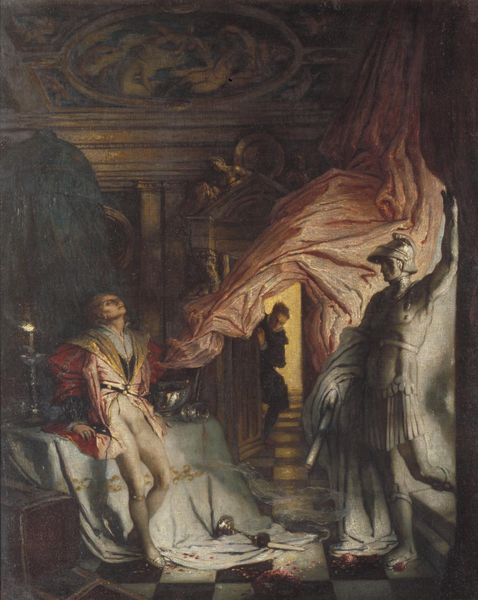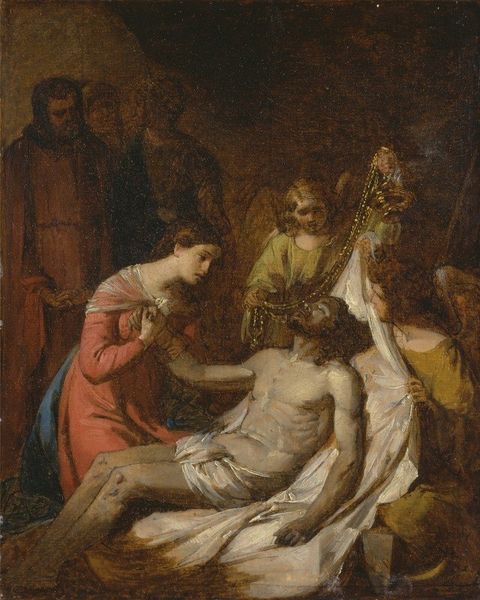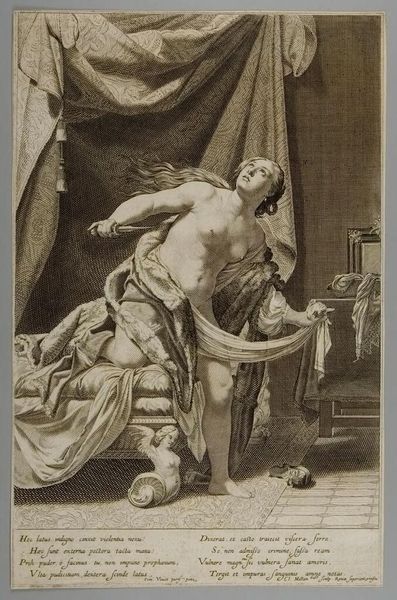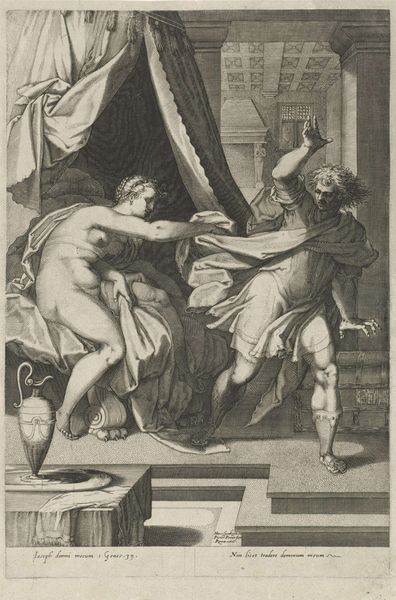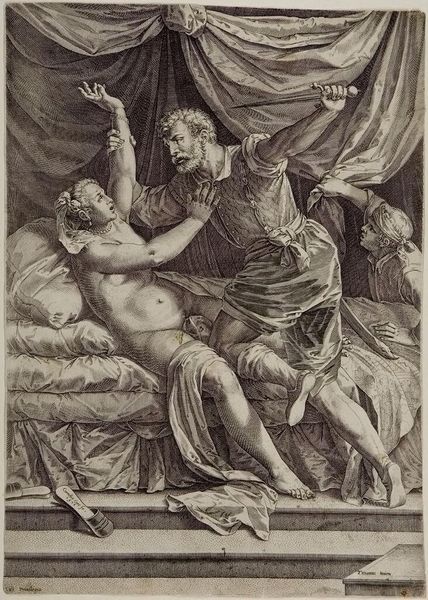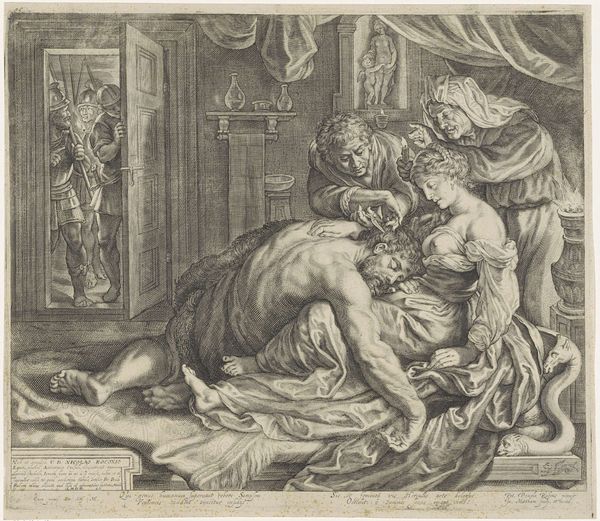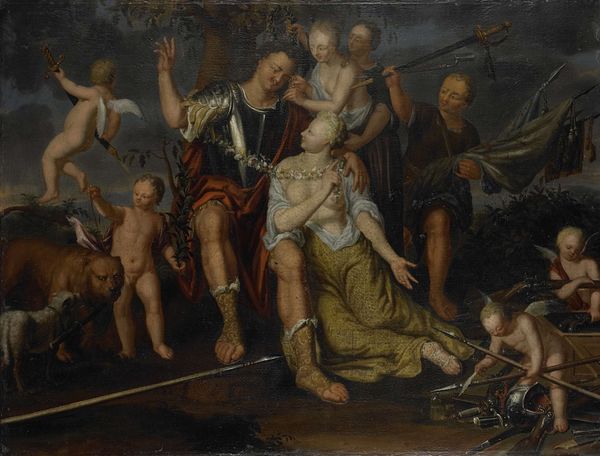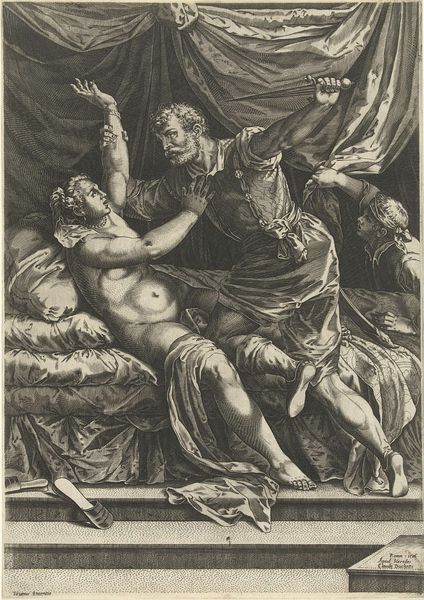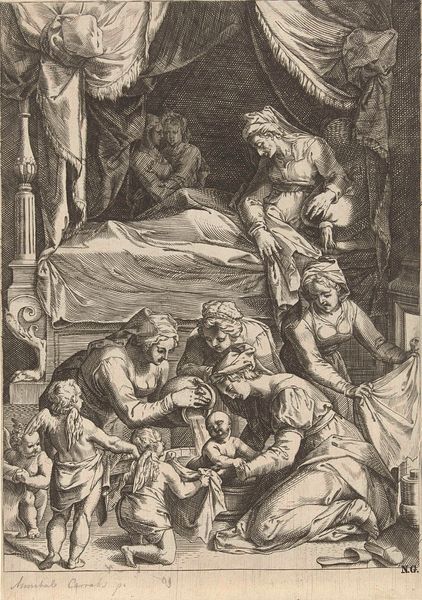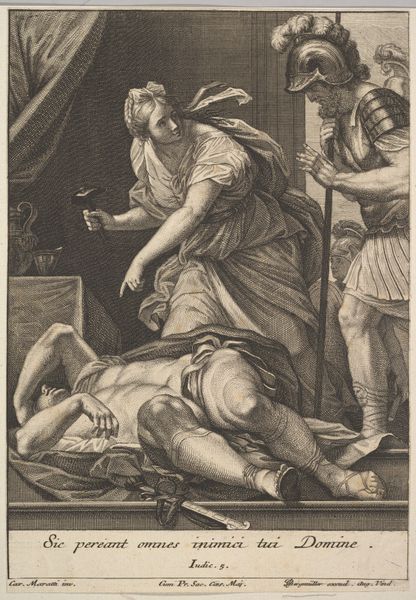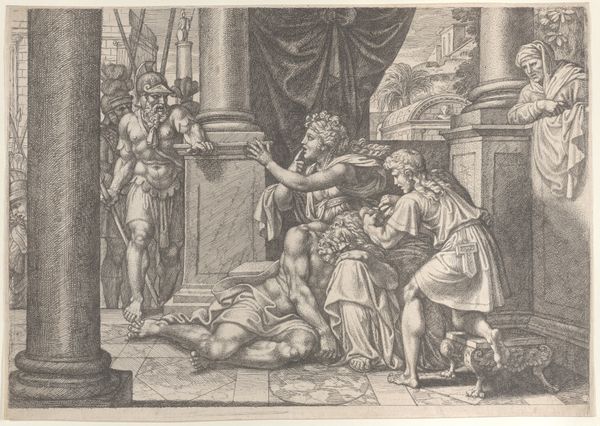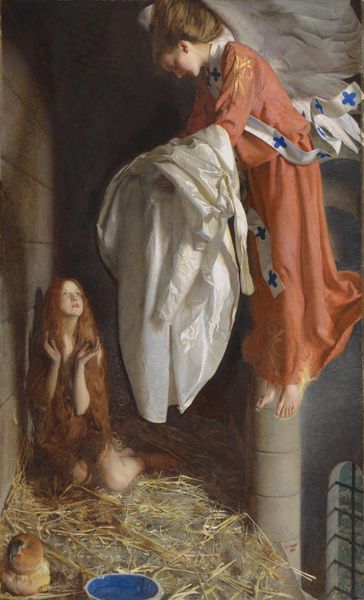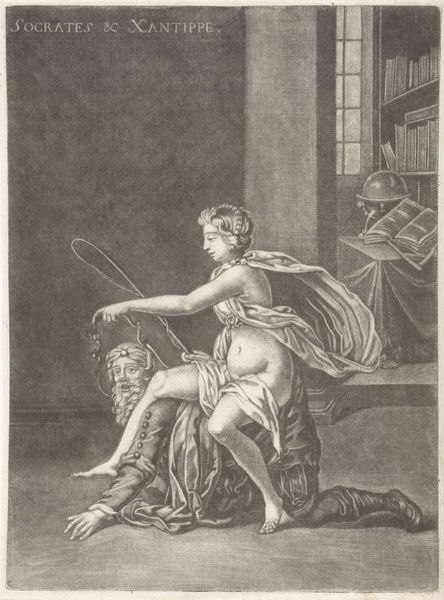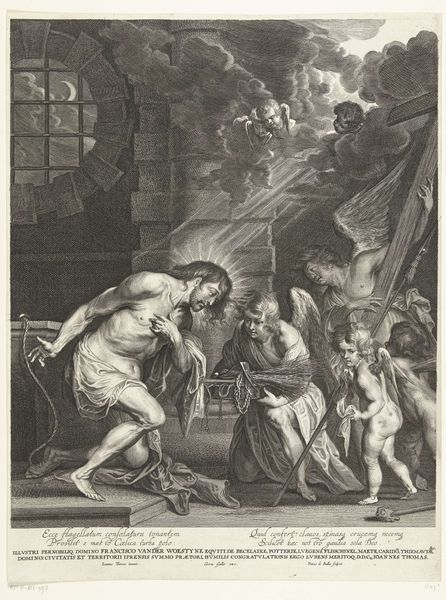
painting, oil-paint
#
narrative-art
#
baroque
#
dutch-golden-age
#
painting
#
oil-paint
#
figuration
#
oil painting
#
history-painting
Copyright: Public Domain: Artvee
Curator: This painting is Rembrandt van Rijn's "Samson and Delilah," likely created between 1626 and 1630. It's an oil on panel work. Editor: Immediately, I feel a sense of impending doom. The dramatic lighting and the intensity of the characters' expressions really create a theatrical atmosphere. Someone is clearly up to no good, maybe she did not need to ask the questions she did. Curator: Indeed. Rembrandt captures a pivotal moment in the biblical story. It is history painting, placing it within the cultural conventions that gave importance to biblical narratives at the time, with strong dramatic contrasts being appreciated and adding some flair. Delilah has just betrayed Samson, revealing the secret of his strength to the Philistines. We're seeing that act unfold, here. Editor: That archer behind them really punctuates that drama! He's bursting into the scene with a mixture of shock and excitement. But look at Samson, draped so limply in Delilah's lap. I wonder what was going on in Rembrandt's heart when rendering the big and once powerful man who trusted the wrong people... what would betraying or having someone be betrayed be to Rembrandt at the time? Curator: Well, the depiction itself is fascinating in the context of Rembrandt's broader artistic production and Dutch society's attitudes towards moral narratives and the display of raw emotion. Samson, typically a symbol of strength, is shown vulnerable. We also need to keep in mind the patronage system back then, as Rembrandt could have done a lot of changes and/ or additions depending on who had acquired it and its personal goals with such representation. Editor: And what about Delilah? While not the focus, that chilling finger against her lips is all one needs to tell that this was intentional! Maybe because of past wounds of the artist as I asked, or to really amplify the betrayal here? In her position as well. So nonchalant, not flinching as she turns over someone. And her helper that appears on the side, I wonder what other horrors Rembrandt knew, to allow him to render his accomplice this way. It is as if something from within is haunting, for them to look like this. Curator: Exactly. Her quiet gesture amplifies her culpability and shifts our reading to focus on questions of treachery. Looking beyond, in terms of interpretation, this image also reveals 17th century ideas on the role of women or views of powerful men. So, more than a capture of a biblical passage, the setting also alludes to an agenda and some level of historic views about social status. Editor: So true, there's much to digest and even wrestle with here. Thank you for the historical and societal context, and especially for not holding back from interpreting. It all makes for such a richer and emotionally deeper experience. Curator: My pleasure. Understanding how Rembrandt situated this biblical scene within the context of his time truly unlocks another dimension for us to perceive as the generations progress and things change.
Comments
rijksmuseum about 2 years ago
⋮
This scene represents the biblical story of the Israelite Samson and the Philistine Delilah. Delilah seduced Samson and lured him into revealing the secret of his superhuman strength, which he would lose if his hair were cut. Without his long hair he would be like any other mortal. Rembrandt painted Samson asleep on Delilah’s lap. She grasps Samson’s hair and signals the approaching man with scissors to be quiet.
Join the conversation
Join millions of artists and users on Artera today and experience the ultimate creative platform.
